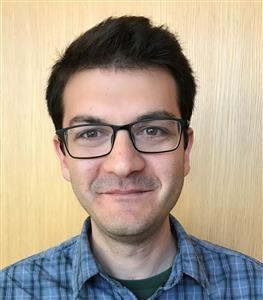Research Interests
I’m generally interested in the application of formal methods (computer science, computational) on complex multi-scale (biological) systems and especially in systems where there are emergent phenomena.
During my PhD, we developed a language called Chromar [4], in the tradition of notations for chemical reactions, for writing complex systems where discrete dynamics (creation/destruction of agents) can be combined with, for example, continuous dynamics in the same notation. For example, in a 1d array of cells where a chemical X is diffusing and new cells are added at the end of the array (via division etc.)
Note the observable (database-inspired function on the entire state of the system) counting the number of cells. Explicit functions of time are also allowed via fluents. The language has an implementation as an embedded language inside the general-purpose programming language Haskell (https://github.com/azardilis/Chromar/tree/develop).
We used this language to develop a whole-plant model and extend it to the population level to start answering ecological questions [3].
During my time at SLCU, I have been working on early flower development and the emergence of the sepals. We have worked on the molecular basis of this process with a Flower Atlas [1] that shows spatiotemporal and combinatorial gene-growth associations. I am also interested in the mechanical basis of this process and the role of the cytoskeleton as a mediator of mechanical signals (e.g. mechanical stress) in early flower development and in morphogenesis in general.
I’m also interested in the origin and transformation of institutions (in the wider sense) in society (see [2]), philosophy, music, football, and photography.
Brief Bio
I’m originally from Cyprus and I did my undergraduate in Computer Science at the University of Southampton, followed by an MPhil in Computational Biology at the University of Cambridge and a PhD with Prof Andrew Millar (Biology) and Prof Gordon Plotkin (Computer Science) at the University of Edinburgh entitled ‘Modelling language for Biology with applications’.
Science communications and outreach
I love talking to people about science and regularly volunteer for public outreach events at the Sainsbury Laboratory, including Cambridge Festival, Festival of Plants, Big Biology Day and Open Cambridge.
I participated in the Gatsby Plant Science Summer School in 2022, which introduces first-year university students to the varied opportunities of plant science careers, through talks from scientists, career sessions, workshops and discussions. As part of the programme, I shared what I do at the Sainsbury Laboratory, where I am developing new model frameworks to better understand plant morphogenesis.
In the above video, produced for the Gatsby Plant Science Education Programme, I talk about how mathematical frameworks can be used to study a particular system or process, such as plant morphogenesis - the science of how cells grow together to form complex shapes and structures.
Key publications
[1] Refahi, Y., Zardilis, A., Michelin, G., Wightman, R., Leggio, B., Legrand, J., ... & Traas, J. (2021). A multiscale analysis of early flower development in Arabidopsis provides an integrated view of molecular regulation and growth control. Developmental Cell, 56(4), 540-556. https://doi.org/10.1016/j.devcel.2021.01.019
[2] Nelson, S., & Zardilis, A. (2021). Power and Responsibility: The Role of the Sciences in Reducing Social Inequality. https://doi.org/10.17863/CAM.66531
[3] Zardilis, A., Hume, A., & Millar, A. J. (2019). A multi-model framework for the Arabidopsis life cycle. Journal of experimental botany, 70(9), 2463-2477. https://doi.org/10.1093/jxb/ery394
[4] Honorato-Zimmer, R., Millar, A. J., Plotkin, G. D., & Zardilis, A. (2019). Chromar, a language of parameterised agents. Theoretical Computer Science, 765, 97-119. https://doi.org/10.1016/j.tcs.2017.07.034

